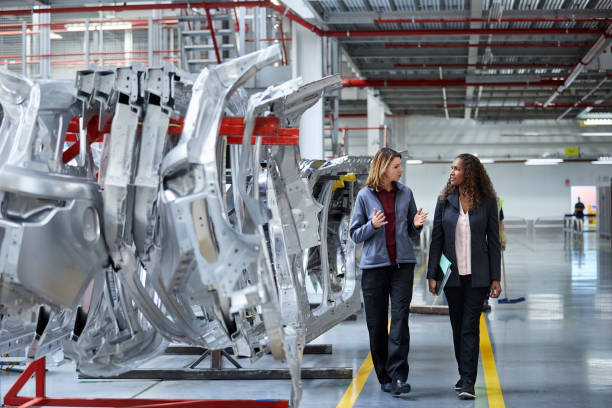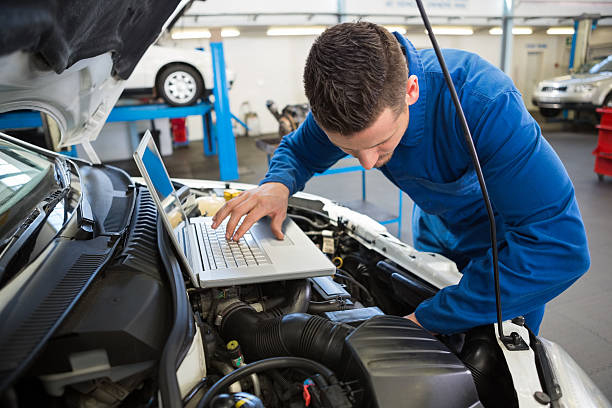Quality Control in The Automotive Industry Ensuring Safety
Quality Control in the Automotive Industry: Ensuring Safety
The auto industry is at the forefront of technological advancements, constantly striving to improve the performance, efficiency, and safety of vehicles. As vehicles become more complex, ensuring quality control in the automotive industry has become paramount to ensure the safety of both drivers and passengers. Here, we will delve deep into the world of quality control in the automotive industry, exploring its importance, methods, and the role it plays in ensuring safety on the road.

Understanding the Significance of Quality Control in the Automotive Industry
Quality control is the systematic process of ensuring that products meet certain quality standards and specifications. In the auto industry, quality control is all about making sure that vehicles are built and assembled to the highest possible standards to ensure safety, performance, and customer satisfaction.
The Safety Imperative
Safety is arguably the most critical aspect of quality control. Millions of lives are at stake every day when people get behind the wheel. Defective or poorly manufactured vehicle components can lead to accidents, injuries, and fatalities. Therefore, stringent quality control measures are not just a choice but an ethical and legal obligation for automakers.


Building Consumer Trust
Quality control is also closely tied to customer trust. When a customer purchases a vehicle, they are putting their faith in the automaker to provide them with a reliable and safe mode of transportation. A single safety recall or a series of quality issues can severely damage a manufacturer’s reputation, leading to a loss of consumer trust and loyalty.
Methods of Quality Control in the Automotive Industry
Ensuring quality control involves a combination of advanced techniques, cutting-edge technology, and rigorous testing processes. Let’s explore some of the primary methods employed:
Statistical Process Control (SPC)
SPC is a widely used method to monitor and control the production process. It involves collecting and analyzing data to identify variations and trends. By continuously monitoring key parameters, manufacturers can catch deviations from the norm early, reducing the likelihood of defects.
Failure Mode and Effects Analysis (FMEA)
FMEA is a systematic approach used to identify potential failure modes within a product or process and evaluate their potential effects. This proactive method allows manufacturers to prioritize and address high-risk areas to prevent failures that could compromise safety.
Non-Destructive Testing (NDT)
NDT techniques such as ultrasonic testing, radiographic testing, and magnetic particle inspection are used to detect defects in materials and components without causing damage. These methods are crucial for ensuring the structural integrity of critical parts like engine components and chassis.
Automated Inspection Systems
Advancements in automation have led to the development of highly efficient automated inspection systems. These systems use robotics and artificial intelligence to inspect and identify defects in real-time during the manufacturing process, ensuring consistent quality.
Six Sigma
Six Sigma is a smart way of doing things to make them almost perfect. It’s all about using data to find problems and make things better.
Here’s how it works:
- Defining: First, you figure out what exactly needs improvement. You define the problem.
- Measuring: Then, you measure how bad the problem is. You need to know where you’re starting from.
- Analyzing: After that, you dig deep into the data to understand why the problem exists. What’s causing it?
- Improving: Once you know the cause, you come up with solutions to fix it. You want to make things better.
- Controlling: Finally, you put systems in place to make sure the problem doesn’t come back. You control the process to keep it working well.
So, Six Sigma is like a step-by-step process (DMAIC) to find and fix problems, making things work almost perfectly.

The Role of Technology in Quality Control
Technology has a major role in making sure things are of high quality. It helps in checking and ensuring that products meet the standards set for them. This involves using advanced tools and systems to catch any mistakes or defects early on in the production process. So, technology acts like a guardian, making sure everything that’s made is top-notch.
Here are some ways technology is revolutionizing the process:
- IoT and Sensors
The Internet of Things, or IoT for short, means that vehicles can have lots of special sensors on board. These sensors are like little detectives that always watch how the vehicle is doing and gather information. This information is then looked at closely to find any problems and even guess when the vehicle might need fixing. This helps make sure the vehicle is safe to use and won’t break down unexpectedly, which is really important.
- Big Data and Analytics
The industry generates a huge amount of information every day. Big data analytics is like a super smart tool that helps manufacturers understand all this data. It gives them important information about things like quality trends (whether things are getting better or worse), and how efficiently they’re making stuff, and it can even spot problems before they get really serious. It’s like having a special radar for quality control.
- Artificial Intelligence (AI)
AI-powered algorithms can analyze complex data patterns and detect anomalies in real time. They’re really good at looking at lots of complicated data and finding unusual things right away. This is super important because it helps us find possible problems when making things and even foresee when parts in cars might have issues while driving. It’s like having a super watchful eye that never gets tired!
At Last
Quality control is not merely a process; it’s a commitment to safety, reliability, and consumer trust. The methods and technologies employed in quality control continue to evolve to meet the ever-increasing demands of the industry. With stringent regulatory standards and a focus on innovation, the auto industry is poised to deliver safer and higher-quality vehicles to consumers worldwide.
In an era where technology is transforming the way we drive, quality control remains the bedrock upon which the automotive industry builds its future. As consumers, we can expect safer, more reliable vehicles thanks to the unwavering dedication to quality control.
